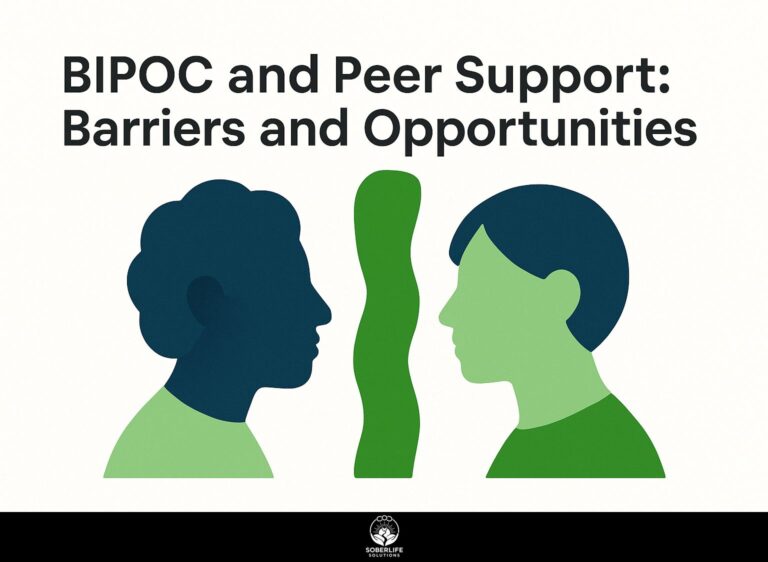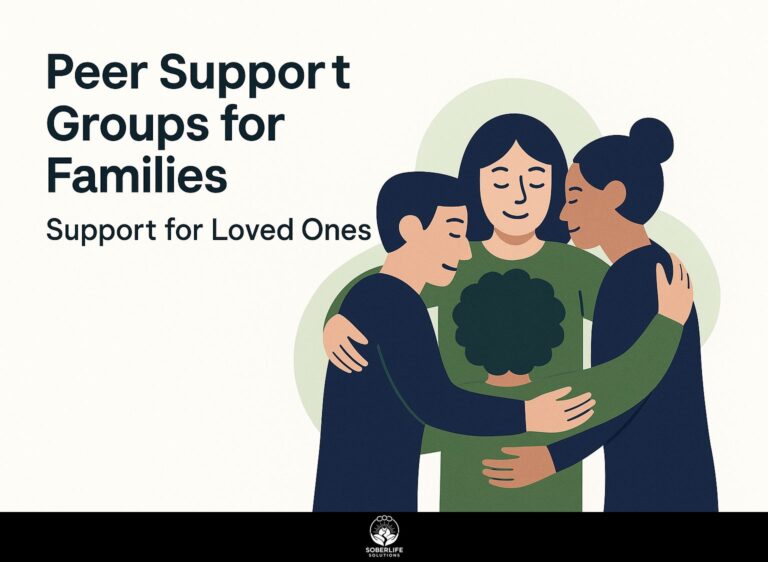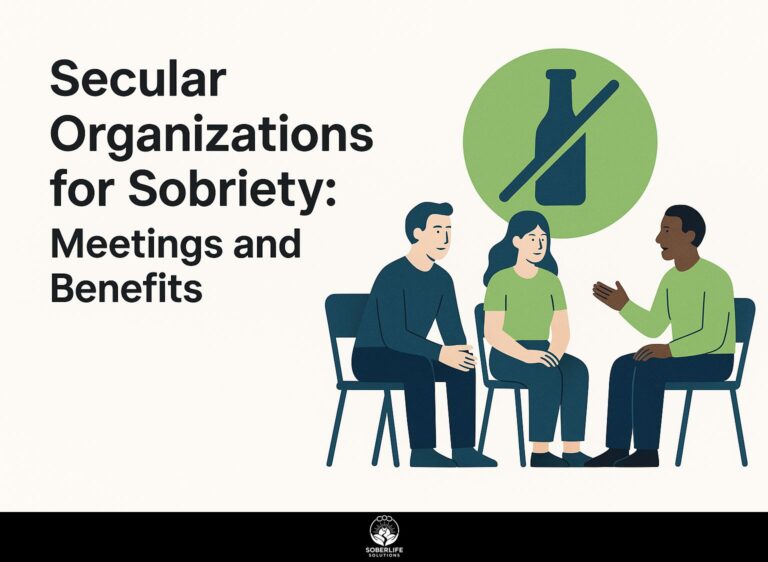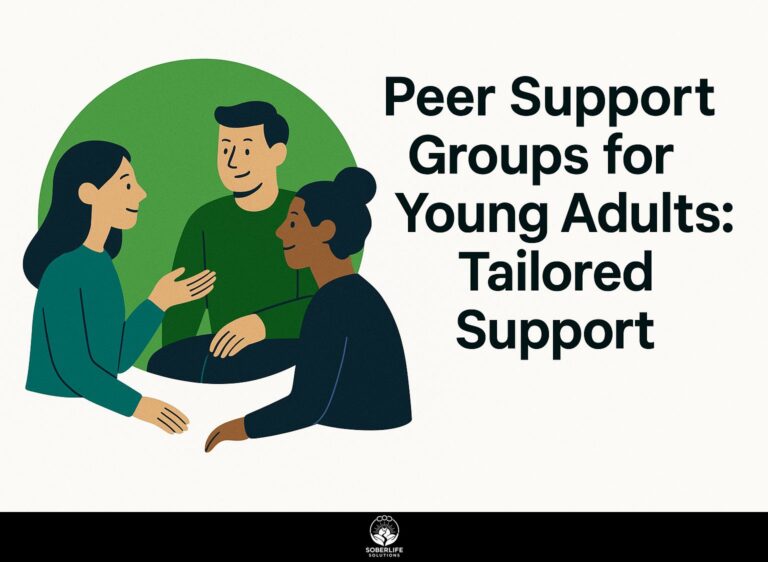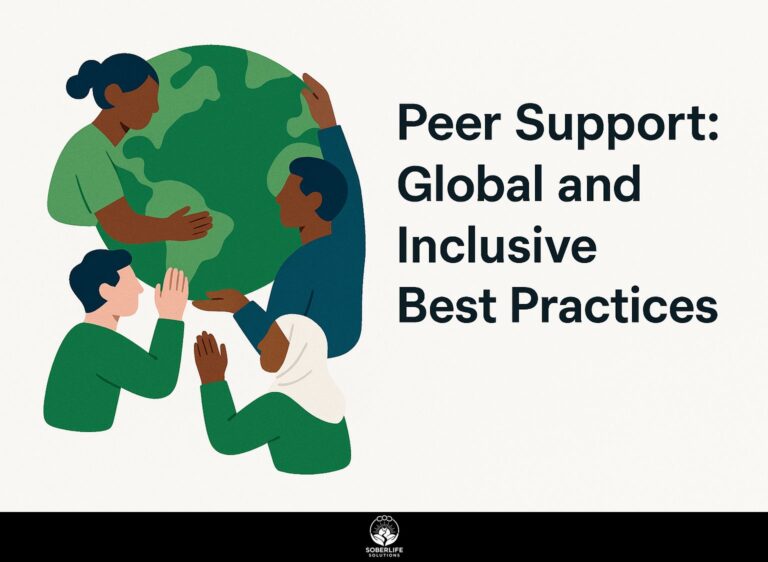Chronic Illness Peer Support: Advantages and Dynamics
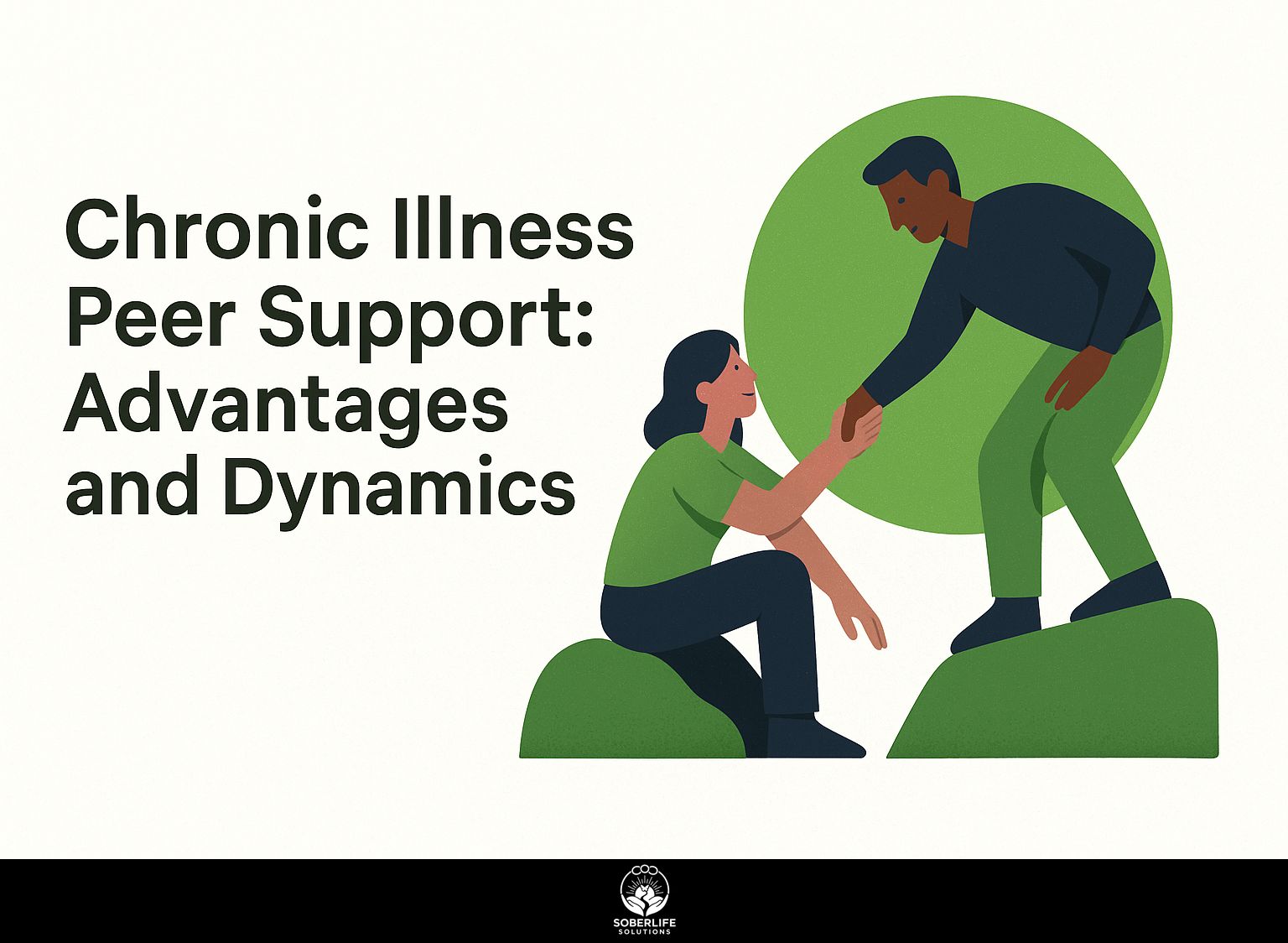
Having a long-term illness can often make people feel isolated, but support from others can be very helpful. In community settings and through tailored peer support programs, people dealing with different health issues find empathy and connection. This article looks at how peer support works, its strong effect on mental health, and how it can improve experiences within healthcare systems. Learn the benefits of shared experiences and working together to handle long-term health issues.
Key Takeaways:
Understanding Chronic Illness
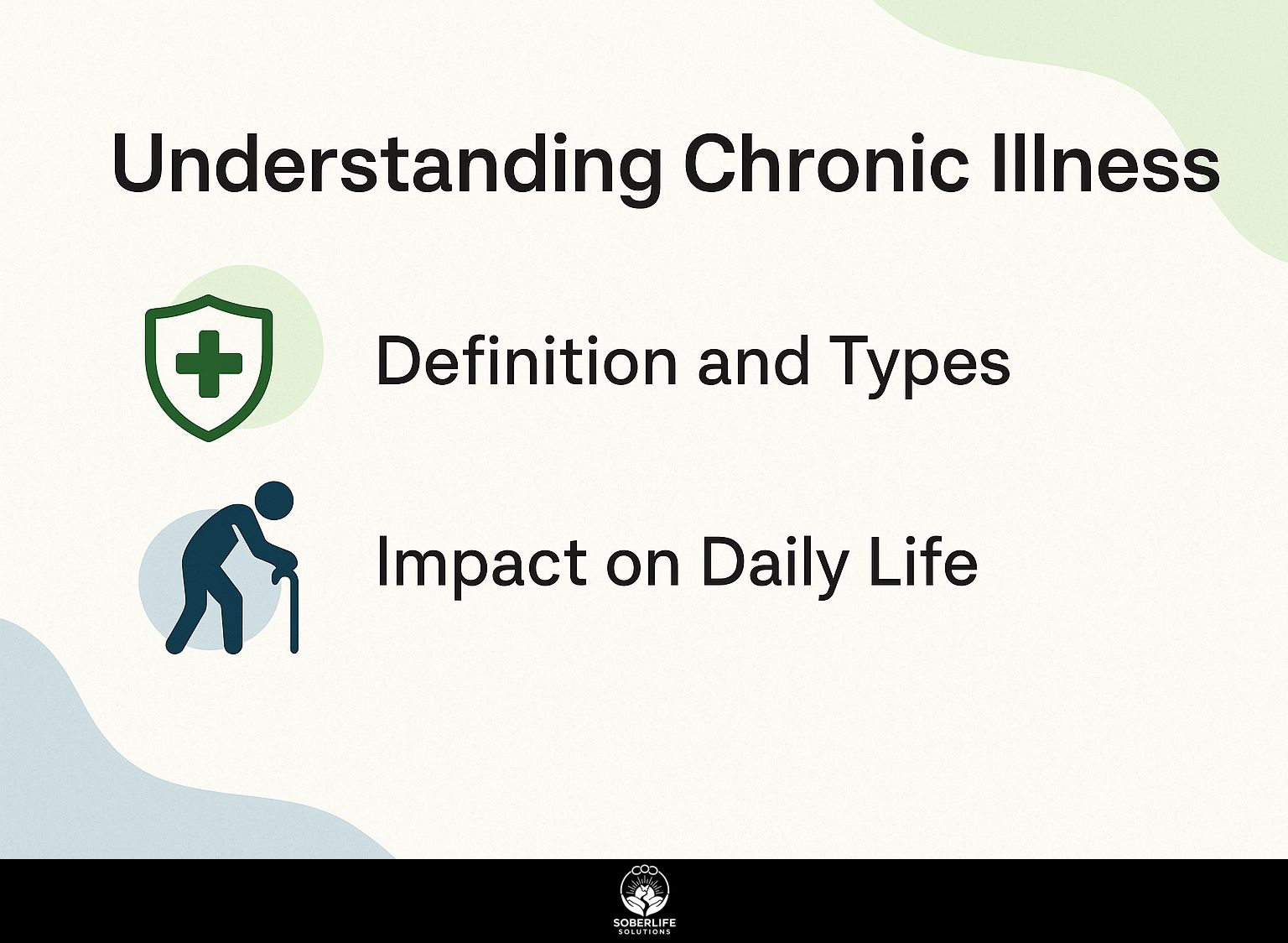
To effectively deal with long-term illnesses, it’s important to know what they are and the different kinds, as they affect millions of people globally. Interested in learning how understanding the framework for chronic illness can aid in recovery? Our insights on the Chronic Illness Framework in Substance Use Recovery provide valuable perspectives.
Definition and Types
Chronic illness includes various health issues, such as diabetes, hypertension, and mental health disorders, affecting long-term health management.
Common chronic illnesses are diverse, including:
- Diabetes: Characterized by high blood sugar levels, it affects approximately 34 million Americans.
- Hypertension: Often called high blood pressure, it impacts about 116 million adults in the U.S.
- Depression: This mental health disorder affects nearly 21 million adults, contributing to a significant burden of disease.
Peer support programs designed for each condition can be important in promoting shared experiences and coping methods. For instance, support groups for diabetes management focus on dietary advice, while those for mental health emphasize emotional resilience.
Impact on Daily Life
Chronic illnesses significantly influence daily life, often leading to social isolation and challenges in self-management and emotional support.
People with ongoing health issues often experience changes in their daily habits, which can affect their jobs and relationships.
For example, fatigue may hinder participation in social activities, leading to feelings of loneliness. This isolation is compounded by mental health struggles, such as anxiety and depression, which are prevalent among those managing chronic illness.
Qualitative research indicates that peer support groups, whether in-person or online, greatly alleviate these burdens by providing shared experiences and emotional validation. Finding these communities can help you feel connected and improve how you deal with challenges. As noted by the CDC, enhancing social connectedness can significantly mitigate the adverse effects of chronic illness.
Benefits of Peer Support
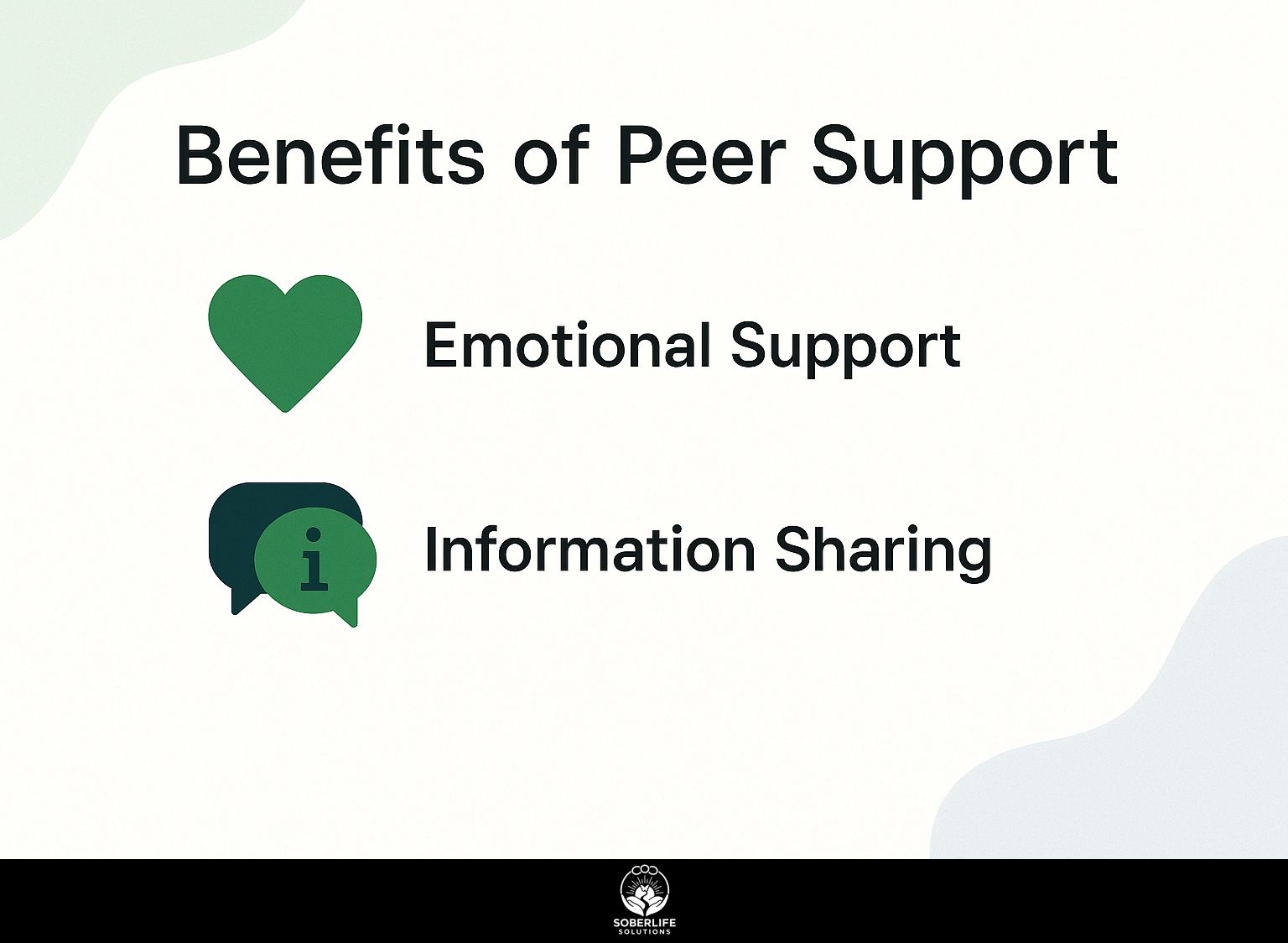
Peer support provides many benefits that improve the well-being and strength of people dealing with long-term illnesses. To understand more about these benefits, you can explore the definition, benefits, and activities of peer support groups and how they contribute to overall health.
Emotional Support
Getting emotional support from friends can greatly help people with ongoing illnesses feel stronger and improve their mental health.
Joining peer support groups gives people the chance to share their stories, which helps them feel connected and is important for healing. Studies show that those engaged in peer support report a 30% increase in positive mental health outcomes.
To find a group, look at platforms like Meetup or Facebook, which have many choices for different illnesses. Apps like PatientsLikeMe help patients with similar conditions connect, share information, and support each other.
Regular interaction in these environments can improve coping methods and offer strong emotional support.
Information Sharing
Sharing information within peer support groups helps participants find helpful resources and coping strategies.
Members often share personal stories to help others find their way through healthcare systems. For instance, in a diabetes support group, one participant shared how she successfully advocated for continuous glucose monitoring by preparing detailed documentation of her health needs.
Another interesting conversation was about local specialty pharmacies that offer medications at reduced prices, allowing people to save money.
Using secure communication tools like Facebook Groups or WhatsApp lets members talk instantly, ask questions, and get quick advice, creating a supportive setting adjusted to each person’s health path.
Dynamics of Peer Support Groups
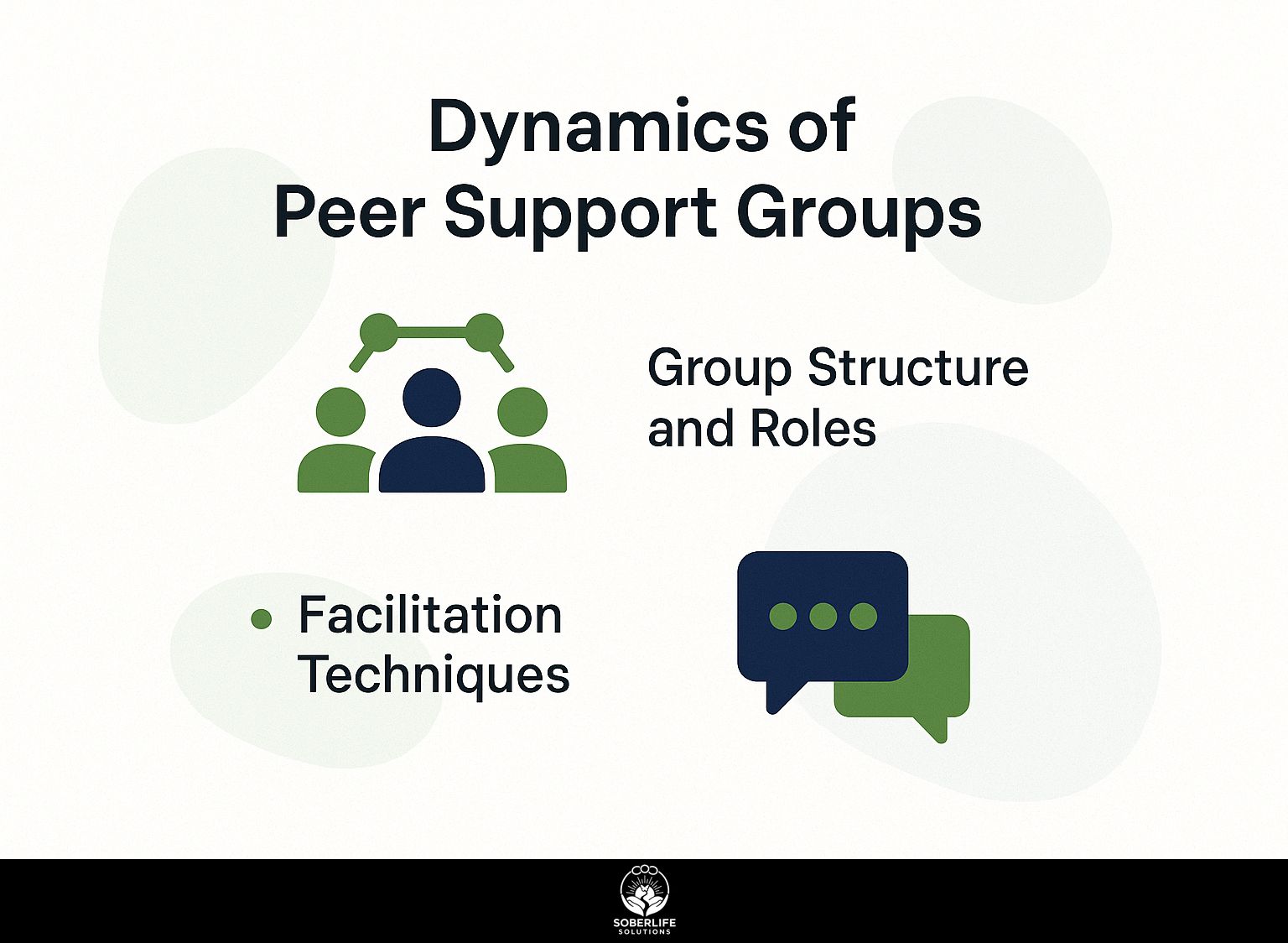
Knowing how peer support groups work is important for creating helpful and encouraging spaces for those involved. If interested, check out this detailed guide on the benefits and activities of peer support groups to gain a deeper understanding of their positive impact.
Group Structure and Roles
Clear group structures and specific roles improve how peer support systems work.
In peer support groups, roles can vary significantly to maximize support and create a safe environment. Leaders often guide discussions and ensure everyone has a chance to speak, while group members share their experiences and show empathy.
For example, NAMI Colorado Springs uses trained leaders to keep meetings on track and organized. In the same way, the Alzheimer’s Association suggests that people take turns leading talks to build a feeling of responsibility and involvement.
By clearly outlining these roles, groups can build stronger relationships and create a more supportive environment.
Facilitation Techniques
Effective methods help peer support groups stay active and work well for all participants.
Facilitators can use simple methods to achieve this. Active listening is important; it makes participants feel acknowledged and appreciated.
Use structured discussions to maintain focus and encourage equal participation, perhaps through round-robin sharing. Establishing clear feedback mechanisms, like anonymous surveys, can help assess the group’s emotional well-being.
According to a study, groups that employed these techniques reported a 40% increase in engagement. When facilitators integrate these methods, sessions lead to deeper connections and more meaningful support among participants.
Challenges in Peer Support
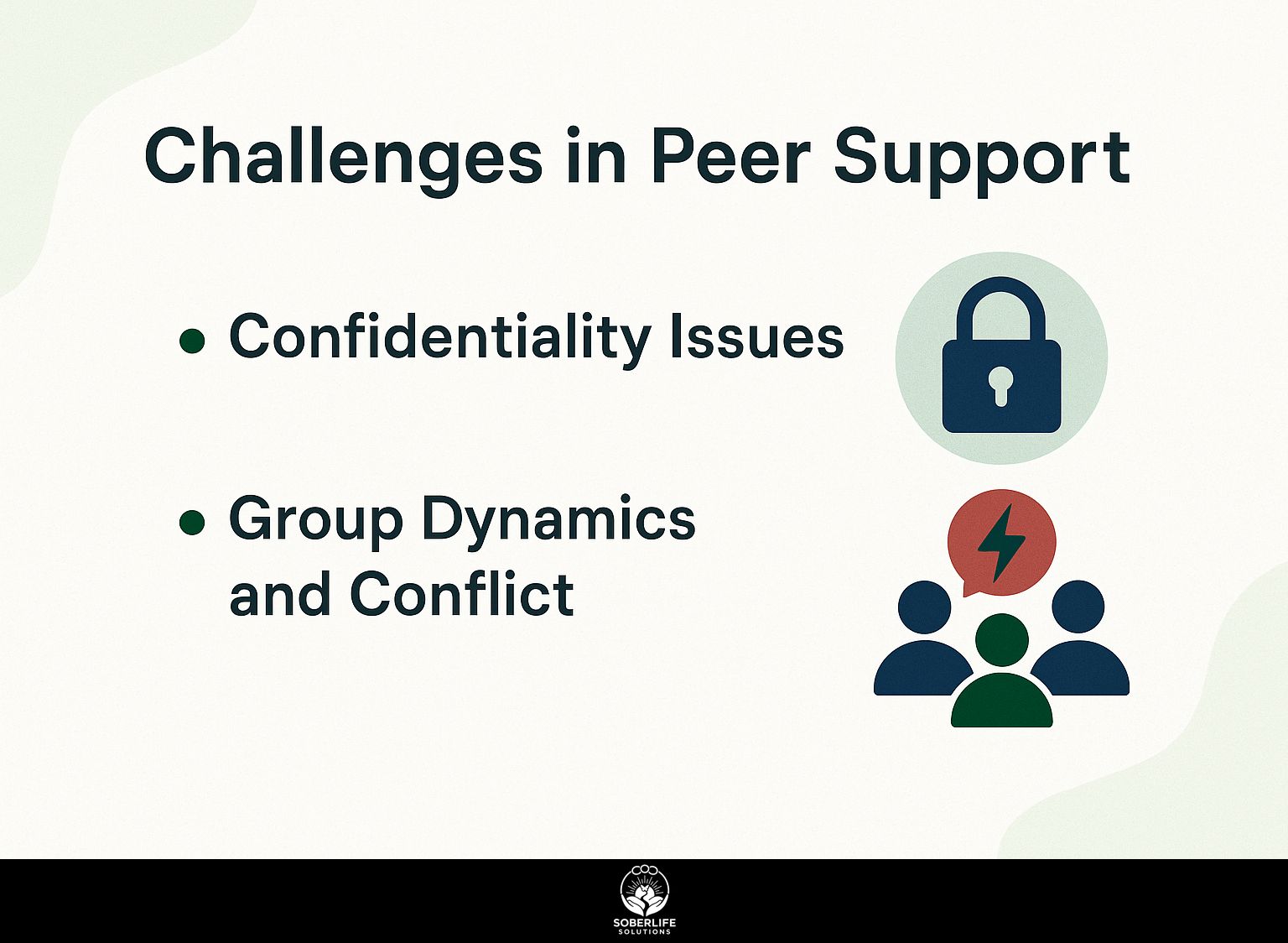
Peer support groups are helpful, but they face specific problems that can limit how well they work if not handled correctly. To delve deeper into what makes these groups beneficial despite their challenges, it’s enlightening to learn more about the definition, benefits, and activities of peer support groups.
Confidentiality Issues
Confidentiality concerns can arise in peer support groups, potentially undermining trust among participants.
To create a safe place, set clear rules about confidentiality. Start by having participants sign a confidentiality agreement that outlines what can and cannot be shared outside the group.
Encourage members to use pseudonyms if they wish to maintain privacy. Regularly remind the group about the importance of confidentiality during meetings to reinforce trust.
Consider implementing anonymous feedback forms to allow members to express concerns or suggestions without fear of exposure. By prioritizing these practices, you create a supportive atmosphere where individuals feel secure sharing their experiences. This aligns with insights from Psychology Today, which underscores the significance of confidentiality in group settings.
Group Dynamics and Conflict
Arguments or disagreements in peer support groups can cause problems, so it’s important to have good ways to resolve conflicts.
To address conflicts constructively, facilitators should be trained in active listening and empathetic communication techniques. For instance, implementing mediation sessions can help members express their viewpoints in a safe environment, allowing for constructive dialogue.
Setting clear group rules for respect and privacy can stop confusion. Techniques like `I’ statements help individuals convey their feelings without assigning blame, enhancing mutual respect. Regular meetings can help spot issues early, creating a more helpful environment.
Frequently Asked Questions
What is chronic illness peer support?
Chronic illness peer support is the help people with long-term health problems receive from those facing similar issues. This involves emotional support, exchanging information, and practical tips. This support can come from friends, family members, or support groups.
What are the advantages of chronic illness peer support?
There are many advantages of chronic illness peer support, including feeling understood and validated by someone who has a similar experience, learning coping strategies and practical tips for managing the illness, and forming meaningful connections with others who can provide ongoing support.
How does chronic illness peer support differ from traditional support?
Unlike traditional support, chronic illness peer support is provided by individuals who share a similar diagnosis and experience. This forms a special connection and knowledge that is often missing in regular support.
What happens in a long-term illness peer support group?
In a chronic illness peer support group, people talk about their experiences, give support and advice to each other, and create a safe, accepting place to discuss the difficulties and achievements in handling their illness.
Are there different types of chronic illness peer support?
Yes, there are different types of chronic illness peer support, such as in-person support groups, online support communities, and one-on-one peer mentoring. Each type offers unique benefits and individuals may find that one type works better for them than others.
Does everyone benefit from having support from others with chronic illness?
Peer support for chronic illness can help many people, but it might not suit everyone. Some individuals may prefer traditional support or may not feel comfortable sharing their experiences with others. It is important to find the type of support that works best for each individual’s needs.

